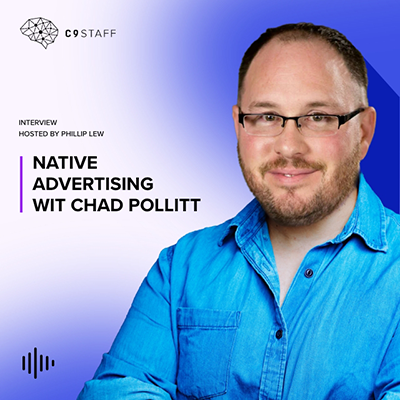
Book Phillip to speak at your next event!
Native Advertising with Chad Pollitt
PHILLIP
This thirst by consumers, in turn, is what fuels entrepreneurship, creating the foundation of economic growth and technological evolution. So what’s the future destiny of this interconnected relationship? Will society evolve into a, sort of, dystopian future of interruption-based advertising? Think Fifteen Million Merits episode from “Black Mirror” here, or is there an alternative model of advertising, one that respects our privacy, feels immersive, relevant, and most importantly, creates a win-win between consumer and advertiser?
To answer these questions and more, I’ve decided to invite Chad Pollitt, to this episode of Innovators. Chad is a member of the Forbes Top 100 list. He’s author of “The Native Advertising Manifesto,” and “The Content Promotion Manifesto,” and “51 Things Your Mother Taught You about Internet Marketing.” Nice title, Chad.
As the author of relevance.com and Vice President of Empowered, I was excited to speak to Chad and to ask him about the future of advertising, and how to create marketing messages that felt relevant and immersive for consumers. Chad is famous for saying “The end of advertising, as we know it, is near.” So to start, I decided to ask Chad to talk to us about what he meant by such a bold and powerful statement.
CHAD
And they did that for a good reason because the CMO didn’t trust it. He’s like, “Something’s not right here. There’s not enough transparency. Let’s pull this.” And you know what happened after they pulled it, Phillip? Nothing. It had no discernible impact on their business. None. Not on their marketing KPIs, not on the sales KPIs, nothing. What does that tell us? Well, it simply tells us that the average consumer out there online has the ability to simply block or ignore those messages. And that’s where native advertising comes in.
Native advertising is the solution to the interruptive advertising problem that we have today. Native advertising…and I’m paraphrasing the Native Advertising Institute, which I used to be a part of and a partner of, is basically, any advertising that fits the form, field, and function of the organic content that surrounds it, okay? It’s not about tricking people, it’s about being transparent and having advertising in the thread. So think about you on your cell phone in your feed. Having an ad unit within that feed that looks organic, that’s clearly defined as sponsored.
Consumers are much more likely to interact and engage with that type of [inaudible 00:04:57].
Phillip
CHAD
You got top-funnel content, middle-funnel content, and bottom-funnel content. That’s how I communicate it. Keep It Simple. Where native advertising is really, really, really good, in most cases, it’s top-funnel to mid-funnel content. What you just talked about, PPC, Google AdWords, is really good at bottom-funnel content. Bottom-funnel content is the stuff that’s trying to sell you now. Top-funnel content is the article that you quoted earlier that I wrote. So there’s a vast difference in what is trying to get you to do in that content.
Native advertising generally is a top to mid funnel affair. Outside of that, there are some native advertising solutions that are good for bottom-funnel content. According to the IAB, Google AdWords is a form of native advertising and that’s good for bottom-funnel content. Now, like I said, I bucket that different. I don’t include it as native advertising for what I do. A good example of a hard-hitting native advertising at the bottom of the funnel is Amazon advertising. Amazon is killing it right now. They are poised to pull massive amounts of spend from Google and Facebook, the duopoly, to make a name for themselves doing native advertising.
If you are on your phone on Amazon, and you go down your feed, you’re going to see sponsored posts. That’s native advertising, and its bottom-funnel content. That’s how you want to think about native advertising. You want to think about where that content lies in the funnel. Mostly, native advertising is good for top-funnel content, mostly, with some exceptions like Amazon or PPC.
Phillip
CHAD
Now, the other thing that you described is an artificial intelligence optimization. We, as humans, we can do split testing, A/B testing, so on and so forth, and figure out, “Hey, this is better. This is better here. This is better there.” The thing is, artificial intelligence can do what 5000 humans can do in the same day. Turning over your testing, your optimization, whatever you’re optimizing towards, to artificial intelligence is a big deal. It gives you scale, it gives you speed, it can learn faster than you or I combined, times 10.
Having a layer of artificial intelligence, it sits over 40-plus layers of native advertising and social media networks can be a competitive advantage for any company trying to amplify their content. And that’s essentially the relationship between programmatic and AI. You want them both. The programmatic gives you the best cost based on market demands, and the AI gives you the best optimization. Now, we, as a company, we optimize towards content engagement where most individual networks, if you go to, say, Outbrain or Taboola or Nativo or Sharethrough or any of the other ones, their AI is going to optimize towards clicks. So there’s a big difference between clicks and actual content engagement.
A company called Chartbeat Analytics, who is the analytics du jour for the majority of publishers out there, the big publishers, to millions and millions of data points, figured out that after a click on a native ad, if that user spends 15 seconds or more with that content, 70% of those users will consume 80% of that content or more. So we’ve used that benchmark as our engagement number. So, basically, if anybody engages with content for 15 seconds or longer, then we charge the customer as opposed to a click. So, our customers only pay for 15 seconds or more of engagement with their content. They do not pay per click.
Now, since we’re connected to 40-plus social and native networks, we pay them based on clicks, but we charge our customers based on actual content engagement.
Phillip
CHAD
Companies are producing massive amounts of top-funnel content. They’re not producing the same quantity of bottom-funnel content. How are budgets being spent? How is advertising budgets being spent online? The opposite. So, today, most of the money goes towards bottom-funnel content distribution, PPC, display advertising, sponsorships, so on and so forth. Real bottom funnel, that’s where the money is being spent. Most of it. In fact, your listeners will be interested in knowing that based on my own research, the average television executive, for every dollar they spend on content creation, on creative, they spend $5 on distribution.
You know what the average content marketer spends? The opposite. What I’m saying is we need to align our priorities in content with our priorities in our distribution budget. So we need to flip that funnel. We need to spend more on top-funnel content promotion than we do on bottom funnel today. And I will say some companies have got this and it’s starting to change, but we’re not quite there yet, but it’s happening.
Phillip
I decided to ask Chad about the difference between native advertising 1.0 and native advertising 2.0., and what that meant for advertisers who are tasked with managing large advertising budgets for their companies and clients.
CHAD
To get scale like that and native 1.0, means you have to have accounts set up on 40-plus native and social networks, and monitor campaigns and A/B test on all 40-plus. With the DSP, you don’t have to do that. You’ve got one interface to access over 40 networks and really scale your distribution. I mentioned Facebook at, say, 20 million. Now, it’s 1 billion people, right? Big difference. Big difference.
Phillip
CHAD
The way I create content and have for my entire career is I consider what I did, what I want to do, and what I’m going to do. And that’s how I write my content. And every time I write an article, or do a video, or do a podcast, it’s one more brick in the road to success. Now, given that I’ve been doing this for so long, I’ve got a pretty substantial road built with bricks that I get to walk on. The point is, content marketing is not something that you start and stop. It’s ongoing. It’s the pulse. It’s the beat of your business publicly. So, even if you do content marketing and get nothing, after a year, don’t stop.
Marcus Sheridan once said, “They ask, you answer.” He wrote a whole book on it. When it comes to content marketing, when it comes to your business, you solve problems, people go to the web to solve problems. They ask, you answer. You solve problems online. That’s what you do with content marketing.
Phillip
Thanks for joining me for another interview segment of Innovators where your future is now. Chad’s book, “Native Advertising Manifesto” can be found on his website at chadpollitt.com. You can also visit his company website at relevance.com. And, of course, you can listen to the full unedited version of this interview segment on our website at c9digital.com Thanks for joining me again, your host, as always, Philip Lew, as we take you, the listener, on a journey from panic to power.







0 Comments